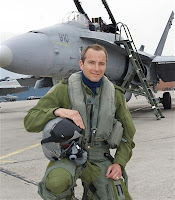



Charles Robert "Charlie" Watts is an English drummer, known as a member of The Rolling Stones. He is also the leader of a jazz band, as well as a record producer, commercial artist, and horse breeder.
Charlie Watts was born to Charles Watts, a lorry driver for a precursor of British Rail and his wife Lilian (née Eaves) at University College Hospital, London, and raised (along with his sister Linda) in Islington and then Kingsbury. He attended Tylers Croft Secondary Modern School from 1952 to 1956; as a schoolboy, he displayed a talent for art, cricket and football.
Watts's parents gave him his first drum kit in 1955; he was interested in jazz, and would practice drumming along with jazz records he collected. After completing secondary school, he enrolled at Harrow Art School (now the University of Westminster), which he attended until 1960. After leaving school, Watts worked as a graphic designer for an advertising company, and also played drums occasionally with local bands in coffee shops and clubs. In 1961 he met Alexis Korner, who invited him to join his band, Blues Incorporated. At that time Watts was on his way to a sojourn working as a graphic designer in Denmark, but he accepted Korner's offer when he returned to London in February 1962.
Watts played regularly with Blues Incorporated as well as working at the advertising firm of Charles, Hobson, and Grey. It was in mid-1962 that Watts first met Brian Jones, Ian "Stu" Stewart, Mick Jagger and Keith Richards, who also frequented the London rhythm and blues clubs; but it wasn't until January 1963 that Watts finally agreed to join the Rolling Stones.
Watts has been involved in many activities outside his high-profile life as a member of the Rolling Stones. In 1964, he published a cartoon tribute to Charlie Parker entitled Ode to a High Flying Bird. Although he has made his name in rock, his personal tastes focus on jazz; in the late 70s, he joined Ian "Stu" Stewart in the back-to-the-roots boogie-woogie band Rocket 88, which featured many of the UK's top jazz, rock and R&B musicians. In the 1980s, he toured worldwide with a big band that included such names as Evan Parker, Courtney Pine, and Jack Bruce, who was also a member of Rocket 88. In 1991, he organised a jazz quintet as another tribute to Charlie Parker. 1993 saw the release of Warm And Tender, by the Charlie Watts Quintet, which included vocalist Bernard Fowler. This same group then released Long Ago And Far Away in 1996. Both records included a collection of Great American Songbook standards. After a successful collaboration with Jim Keltner on The Rolling Stones' Bridges to Babylon, Charlie and Jim released a techno/instrumental album called simply Charlie Watts/Jim Keltner Project. Featuring the names of his favourite jazz drummers, Charlie stated that even though the tracks bore such names as the "Elvin Suite" in honour of the late Elvin Jones, Max Roach and Roy Haynes, they were not copying their style of drumming, but rather, capturing a feeling by those artists. Watts At Scott's was recorded with his group, The Charlie Watts Tentet, at the famous jazz club in London, Ronnie Scott's. In April 2009 he started to do concerts with "The ABC&D of Boogie Woogie" together with pianists Axel Zwingenberger and Ben Waters plus his childhood friend Dave Green on bass.
Besides his musical creativity, he contributed graphic art to early records such as the Between the Buttons record sleeve and was responsible for the 1975 tour announcement press conference in New York City. The band surprised the throng of waiting reporters by driving and playing "Brown Sugar" on the back of a flatbed truck in the middle of Manhattan traffic; a gimmick AC/DC copied later the same year, Status Quo repeated the trick for the 1984 video to "The Wanderer" and U2 would later emulate it in the 2004 video for "All Because of You". Watts remembered this was a common way for New Orleans jazz bands to promote upcoming dates. Moreover, with Jagger, he designed the elaborate stages for tours, first contributing to the lotus-shaped design of that 1975 Tour of the Americas, as well as the 1989–1990 Steel Wheels/Urban Jungle Tour, the 1997 Bridges to Babylon Tour, the 2002-2003 Licks Tour, and the 2005-2007 A Bigger Bang Tour.
There are many instances where Jagger and Richards have lauded Watts as the key member of The Rolling Stones. Richards went so far as to say in a 2005 Guitar Player magazine interview that the Rolling Stones would not be, or could not continue as, the Rolling Stones without Watts. An example of Watts's importance was demonstrated in 1993, after Bill Wyman had left the band. After auditioning several bassists, Jagger and Richards asked Watts to choose the new bass player.[citation needed] Watts selected the respected session musician Darryl Jones, who had previously been a sideman for both Miles Davis and Sting.[citation needed]
In 1989, the Rolling Stones were inducted into the Rock and Roll Hall of Fame. In the July 2006 issue of Modern Drummer, Watts was voted into the Modern Drummer Hall of Fame along with Ringo Starr, Keith Moon, Steve Gadd, Buddy Rich and other highly esteemed drummers.


















































